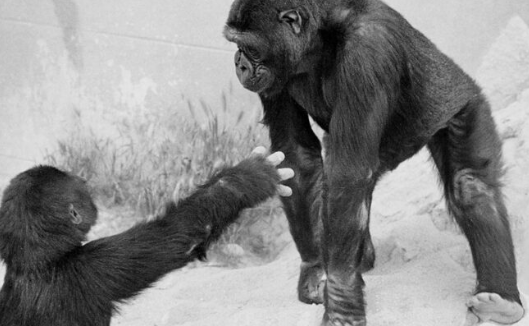How Do Gorillas Use Gestures to Communicate?
Gorillas are among the most intelligent animals on the planet, showcasing a remarkable ability to communicate through gestures. Understanding their non-verbal interactions not only sheds light on their social structures but also enhances our perspective on animal behavior and communication. This fascinating topic demonstrates how complex and nuanced animal interactions can be, inviting us to appreciate the depth of their social lives.
The Role of Gestures in Gorilla Communication
Gestures are essential in the social interactions of gorillas. Unlike many animals that rely primarily on vocalizations, gorillas use a variety of physical movements to express emotions, intentions, and reactions. Common gestures include arm waving, pointing, and even gentle touches, which play a significant role in maintaining social bonds. This non-verbal communication is crucial, particularly in a group setting where subtle cues can determine the dynamics among members. By using gestures rather than sounds, gorillas can convey messages without causing alarm or distress, allowing for a calm social environment.
Different Types of Gestures and Their Meanings
Gorillas employ a wide range of gestures, each serving specific purposes. For example, a sharp arm raise may signal aggression, while a gentle touch can indicate affection or a desire for social interaction. Interestingly, researchers have identified over 100 distinct gestures used by gorillas, highlighting their complex social interactions. Some gestures can have multiple meanings depending on the context. For instance, a gorilla may point to indicate a direction or to draw attention to something of interest. This flexibility in their communication system shows their ability to adapt and respond to various social situations.
Observing Gorilla Gestures in the Wild
Studying gorilla gestures in their natural habitat offers insights into their behavior and social structure. Researchers often conduct field studies in protected areas like national parks, where they can observe group dynamics closely. These observations have revealed that young gorillas learn gestures from older members, showcasing a form of cultural transmission. By paying attention to how gorillas interact with one another through gestures, scientists can gain a deeper understanding of their intelligence and social relationships. This also informs conservation efforts, as understanding communication patterns can aid in creating environments that allow gorillas to thrive.
In conclusion, the study of gorilla gestures opens a fascinating window into their world, revealing the complexity of their social lives and communication. As we continue to learn about these magnificent creatures, we foster a greater appreciation for their intelligence and the importance of their conservation. To explore more about gorilla behavior and communication, consider visiting a wildlife sanctuary or reading up-to-date research articles. Engaging with these resources allows us to become better advocates for gorillas and their habitats. Maybe you would like to explore some gorilla artworks.

